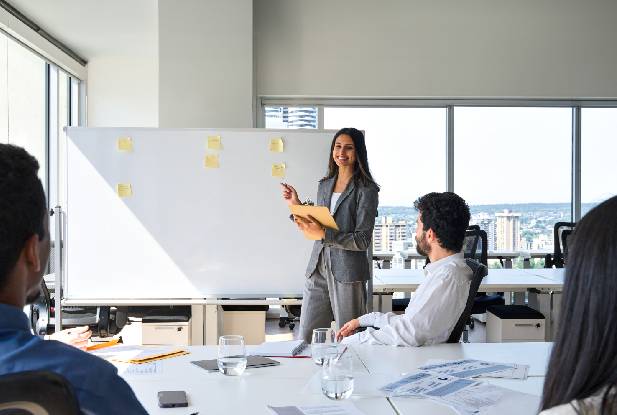
With remote working opportunities taking over the business space, there are very few who want to be in the office. Unfortunately, this isn’t what the employers want. Consequently, there’s a new buzzword in the business world—office peacocking.
What Is Office Peacocking?
Think of office peacocking as a showy display of personal style by the employers. This trend is about creating visually appealing, innovative, and inspiring office environments that stand out in the competitive job market. Mind you, there is just one intent: bringing the employees back to work after a long period of remote working, which is also a great employer branding stragegy.
It involves redesigning the office spaces to impress current employees and encourage them to return. It also attracts and retains top talent. Think of showing your company’s culture, values, and creativity through its physical space. Mind you, this can include anything you like—vibrant colors, plush seating, indoor plants, quirky art pieces, and more.
Also Read: Evolution Of Workplace Perks: What Employers Are Doing To Redefine Them
Why Is Office Peacocking on a Rise?
One of the most important reasons for this trend’s rise is the transition from a completely online to a new offline working style.
The second reason is employee productivity. You don’t want the employee to just come back and experience their office as a typical workplace. You want them to get inspired, be creative, and enjoy themselves while at work. All of this aligns with the expectations of the present workforce, which is dominated by millennials and Gen Z: collaboration, innovation, flexibility, and finding ‘your tribe’ at work.
The third reason is company culture. An office space reflecting your company’s culture and values can reinforce its brand identity. It shows potential employees and clients what the company stands for and how it operates, making the workspace a powerful branding tool.
Finally, client impressions. For companies that frequently host clients and partners, an impressive office space can enhance their reputation. It shows that the company is successful, forward-thinking, and invested in its people and environment.
Also Read: Gen Z at Work: Crafting an Employer Brand that Speaks to the Next Generation
How Can You Redesign Your Workplace?
Office peacocking is more than making superficial changes. It needs strategic planning and thoughtful design. Here are some ways you can redesign your space:
Innovative Design
Unique architectural features, open-plan layouts, and creative use of space can make an office stand out. Think of unconventional meeting rooms, collaborative workspaces, and dynamic break areas. Remember to go beyond just the space; change what you call them. For this, follow this simple rule: Ask what the space is for, and name it that. Here are some inspirations for you:
- Learning Centre
- Collaboration zone
- Idea lab
- Think tank
Vibrant Decor
Bring energy to your workplace with colorful walls, artistic installations, and themed decor. Adding local art or cultural elements can also add a personal touch. For instance, murals by local artists, abstract art, or design elements that highlight the company’s industry can make the office more engaging.
Modern Amenities
Today’s workforce needs everything quick and on point. They also want spaces that fuel them when they are on short breaks. So, adding elements like wellness rooms and on-site cafeterias can enhance the employee experience. Additional features like nap pods and game rooms can further attract and retain top talent.
Biophilic Design
Office plants are said to improve employee productivity by 15%. Lean workplaces are meaner because they are less pleasant and productive. Thus, adding elements of nature into the office can improve well-being and productivity. Think of living walls, indoor plants, natural light, and water features.
Collaborative Spaces
Collaboration is important for innovation and success. Moreover, designing spaces that encourage teamwork can significantly enhance productivity and creativity.
Mind you, these collaborative spaces should cater to various needs, from casual brainstorming sessions to formal meetings. Here are a few examples of the spaces you can create and how to create them.
- Informal Meeting Areas: This is a space for quick catch-up and spontaneous discussion. As a result, it needs to be comfortable and inviting. For instance, adding lounge chairs, bean bags, or sofas. Adding small tables and snack stations to make it more appealing.
- Brainstorming Zone: These zones are for thinking together. As a result, you need to offer your employees everything they need to map out their ideas, make connections, and come to a conclusion. For instance, writable surfaces like whiteboard or glass walls with markers and sticky notes.
- Huddle Rooms: These are small, private spaces for focused group work. As a result, they should have the latest technology to support both in-person and virtual collaboration. Think of adding interactive displays, acoustic panels, and a central table.
Conclusion
When employees feel better, they perform better. A well-designed office space can help you make your workforce more productive and creative. After all, productivity is not about clocking in eight hours a day. It is about achieving high-quality work during key hours!


